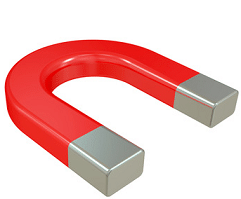Class 6 Exam > Class 6 Tests > Test: Fun with Magnets - Class 6 MCQ
Test: Fun with Magnets - Class 6 MCQ
Test Description
10 Questions MCQ Test - Test: Fun with Magnets
Test: Fun with Magnets for Class 6 2025 is part of Class 6 preparation. The Test: Fun with Magnets questions and answers have been prepared
according to the Class 6 exam syllabus.The Test: Fun with Magnets MCQs are made for Class 6 2025 Exam.
Find important definitions, questions, notes, meanings, examples, exercises, MCQs and online tests for Test: Fun with Magnets below.
Solutions of Test: Fun with Magnets questions in English are available as part of our course for Class 6 & Test: Fun with Magnets solutions in
Hindi for Class 6 course.
Download more important topics, notes, lectures and mock test series for Class 6 Exam by signing up for free. Attempt Test: Fun with Magnets | 10 questions in 15 minutes | Mock test for Class 6 preparation | Free important questions MCQ to study for Class 6 Exam | Download free PDF with solutions
Test: Fun with Magnets - Question 1
The property of attracting iron or other magnetic materials is called
Detailed Solution for Test: Fun with Magnets - Question 1
Detailed Solution for Test: Fun with Magnets - Question 2
Detailed Solution for Test: Fun with Magnets - Question 3
Test: Fun with Magnets - Question 4
Magnet was first discovered about 5000 years ago in the rocks of
Detailed Solution for Test: Fun with Magnets - Question 4
Detailed Solution for Test: Fun with Magnets - Question 5
Detailed Solution for Test: Fun with Magnets - Question 6
Detailed Solution for Test: Fun with Magnets - Question 7
Test: Fun with Magnets - Question 8
The end of a free hanging magnet which point towards North is called
Detailed Solution for Test: Fun with Magnets - Question 8
Detailed Solution for Test: Fun with Magnets - Question 9
Detailed Solution for Test: Fun with Magnets - Question 10
Information about Test: Fun with Magnets Page
In this test you can find the Exam questions for Test: Fun with Magnets solved & explained in the simplest way possible.
Besides giving Questions and answers for Test: Fun with Magnets, EduRev gives you an ample number of Online tests for practice
Download as PDF















